Why Nubians did not write their historical register in their own languages until very late in antiquity? We know about Nubian cultures and their people largely through Egyptology and some writings of the ancient Greek travelers, and some little biblical information. The source of the Nubian history can be divided between written Egyptian documents and register, such as the discovered royal records, the commercial and military expeditions during the Pharaohs times and the archeological excavations and investigations targeting to research and to analyze the discovered objects in the different ancient Nubian settlements.
The A-Group Culture (3900-2900 B.C)
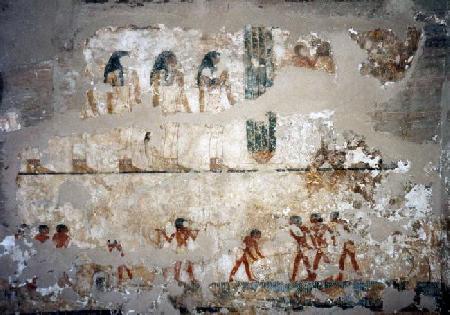
The A-Group Culture (3900-2900 B.C) The A-Group is a culture indigenous to Lower Nubia. The A-Group evolved from about 3900 to 2900 B.C., extending from Neolithic into the Early Bronze Age. In its Classic and Terminal phases, which fall within the Early Bronze Age, the A-Group culture reached the peak of its development. . Articles of A-Group daily life, such as their pottery, jewelry, tools, and weapons, were frequently buried with the dead. The A-Group people made pottery of very fine quality. Red polished pots with black mouths and eggshell-ware painted pots are the most beautiful of these. They also made stone palettes for grinding pigments or eye paint.. The A-Group people lived primarily by farming, collecting local plants and animals, and herding cattle. Later on in their development, the A-Group people were able to import large amount of goods from Egypt. We see this in the cemeteries, where many Egyptian objects, especially pottery, were buried among the A-Group objects. The A-Group people got these goods by trading with the Egyptians. Many exotic commodities from the south, such as ivory, animal skins, and special woods, did not exist in Egypt. The A-Group people acted as intermediaries in this trade, and most of the exotic products of Africa traveled through the corridor of Lower Nubia to Egypt After about 2900 B.C. the A-Group people abruptly vanished, and for 500 years there seem to have been few people living in Lower Nubia. At this time the power of Egypt, unified under the first pharaohs, was becoming ever greater. The A-Group evolved from about 3900 to 2900 B.C., extending from Neolithic into the Early Bronze Age. In its Classic and Terminal phases, which fall within the Early Bronze Age, the A-Group culture reached the peak of its development. By Egypt's Old Kingdom, the Egyptians founded a settlement at Buhen which apparently was an important site for copper production. Later, Cheops opened diorite quarries in Lower Nubia especially in the site of Toshka By the 5th dynasty Egyptians began trading with theNubia. By Egypt's Nubia caravanning eastward through the Waded Allgi, or by the river Nile... Despite that Buhen was abandoned in the 5th Dynasty and the diorite quarries near Toshka were closed, Egypt maintained its hold over Nubia in the late Old Kingdom. In the early 6th dynasty, Egyptians were recruiting Nubian mercenaries into the Egyptian army. It seems that pharaohs destroyed the A-Group, possibly forcing the inhabitants of Lower Nubia further to the south, into Upper Nubia.
Nubia during Old Kingdom.
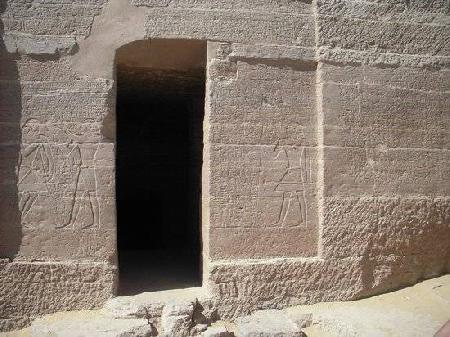
By Egypt's Old Kingdom, the Egyptians founded a settlement at Buhen which apparently was an important site for copper production and a control point as well. Later, Cheops opened diorite quarries in Lower Nubia especially in the site of Toshka. By the 5th dynasty Egyptians began trading with theNubia. By Egypt's Nubia caravanning eastward through the Waded Allgi, or by the river Nile... Despite that Buhen was abandoned in the 5th Dynasty and the diorite quarries near Toshka were closed, Egypt maintained its hold over Nubia in the late Old Kingdom. In the early 6th dynasty, Egyptians were recruiting Nubian mercenaries into the Egyptian army. It seems that pharaohs destroyed the A-Group, possibly forcing the inhabitants of Lower Nubia further to the south, into Upper Nubia, or probably a wave of the southern attacks destroyed that Nubian glorious culture.
C- GROUP CULTURE: (KERMA) CULTURE 2000-1800 BC (MIDDLE KINGDOM IN EYPT).
Around 2500 B.C. We again have evidence for people living in Lower Nubia. Archaeologists call this culture the C-Group. It is believed that the C-Group developed in Upper Nubia and spread northward into Lower Nubia around this time. In its earliest phases, the C-Group is related to another Nubian culture called the Kerma culture, which developed in Upper Nubia. The Egyptians traded with the early C-Group and recorded in written texts the names of three Nubian regions, Wawat, Irjet, and Setju, which were ruled by powerful chieftains. Those Egyptian texts are mainly from the old kingdom written inside the tombs of some official travelers. Like the earlier A-Group, the C-Group people lived along the fertile banks of the Nile and buried their dead in cemeteries along the dessert edges.. Herding of cattle was important in the life of the C-Group people. Some C-Group graves had stones next to them decorated with inscriptions of cows. Many skeletons have been found in the C Group tombs that have Negroid characteristics, while skeletons of the preceding periods have characteristics similar to those of the Egyptians In the earlier C-Group, there was active trade with the Egyptians. Many Egyptian objects were buried in the C-Group graves from this time. Middle Kingdom (2000-1800 B.C) took control of Lower Nubia. They built a series of fortresses throughout Lower Nubia and staffed them with soldiers. The Beginning in 2000 B.C., however, the might of Egypt began to rise again, and the pharaohs of the Middle Egyptians seemed to have wanted to control the resources of Lower Nubia and to govern directly the trade with the southern regions.. The Second Cataract area was the southern frontier of Egyptian control. The Egyptians strengthened this frontier because to the south was the powerful Kerma culture of Upper Nubia. The C-Group people seem to have been directly controlled by the Egyptian state. Egyptian records tell us that C-Group chieftains were forced to pan gold in one of the gold-rich wadis. One stele records words of an Egyptian pharaoh, saying that only Nubian's who obey will be justly treated, and Nubian's who oppose Egyptian control will meet with punishment. During the New kingdom (1650-1350BC) Egyptian kings restored the ancient fortresses and built new ones, besides some temples dedicated for Egyptian gods.Thotmosis III was the first king who imposed a complete Egyptian control over the entire Nubia ,from the first cataract in Egypt up to the 4th cataract in Sudan, he recorded in famous Stella found nearby .Since then the king of Egypt used to appoint the governor of Nubia directly under the official title of (THE SON OF THE KING IN THE LAND OF KUSH) called IDENU .and Nubia became divided in 2 main parts Lower Nubia lays now in Egypt ,and they used to call Wawat ,and the Upper Nubia called in Egyptian sources Kush
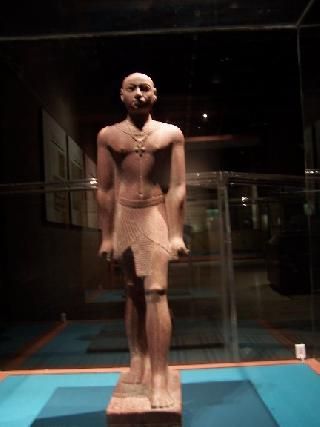
HISTORY OF KUSH CIVILZATION.
The origins of the rulers of Kush remain unknown. Among the royal Napatan tombs at the site of Kurru are a number of early tumulus burials in which the bodies are laid out on beds. Though there were no inscriptions found in these tumulus graves to identify the people buried in them, tumulus graves are a distinctive Nubian tradition, so the Kushite kings were most likely of Nubian origin. Some scholars believe that the development of the Napatan monarchy took place without any influence from Egypt. Other scholars believe that the Kushite kings rose to power as a result of an arrangement between local Nubian chiefs and a group of Egyptian or Egyptianzed priests. These priests would have been left behind at the great Amon temple at Jebel Barkal when Egypt withdrew from Nubia at the end of the New Kingdom. The priests perhaps needed the military power of local chiefs to maintain their position within the religious system of the local government, and so an alliance was formed. This hypothesis might explain the rapid rise to power of the Kushite kings, since they would have been supported by the well-established priesthood. The tumulus graves at Kurru, then, would belong to these powerful local chiefs. The lack o f written evidence from the Kushites themselves prevents archaeologists from deciding which hypothesis is correct.
Kush Expnasion
Whatever their origins, by about 770 BC the Kushite kings were powerful enough to contemplate extending their rule to the north. The first ruler whom we know by name is Kashta (770-750 B.C.); though few details are known about his life, it is apparent that during his reign he journeyed to southern Egypt, where he left a monument at Aswan. More is known about the reign of Kashta's son Piye whose name was formerly read as Piankhy, Egyptian for "the living one." Piye left a large Stella, now in the Cairo Museum, describing the major events in his reign. Piye apparently spent the first two decades of his reign peacefully, at his capital of Napata, though the stela tells us he also ruled over southern Egypt. Then he received a request from officials at Thebes for military protection against a local ruler from the Egyptian Delta named Tefnakht, who wanted to rule over all of Egypt. Piye himself traveled north to Egypt and successfully pursued and destroyed Tefnakht's army. After this time, Piye used the ancient titles of the Egyptian pharaohs, though he never returned to Egypt and lived the remainder of his life in Nubia. Piye is generally considered the founder of the Twenty-fifth Dynasty in Egypt.
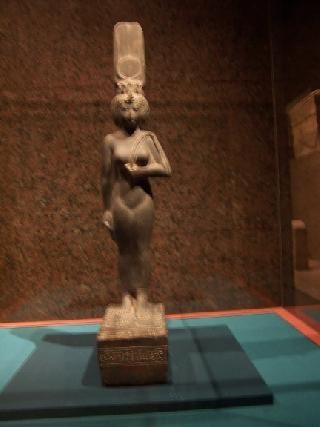
Successors of Piye
Piye's successors managed to retain control of Egypt for about 50 years, but the rulers of the Twenty-fifth Dynasty were eventually ousted from Egypt by the Assyrians, who lived in the area of modern Iraq. Although some of the Nubian rulers of the Twenty-fifth Dynasty are not well known, Piye's son Taharqa (690-664 BC) stands out in the archaeological and historical records of the time. Although Taharqa spent much of his reign trying to repel Assyrian forces from Egypt, he was also able to carry out an extensive building program in Egypt and Nubia. Taharqa's renovations and additions are visible in the Theban temple of Amon at Karnak as well as in the Nubian temple of Amon at Jebel Barkal. He also constructed a temple at Kawa, which became an important religious center of the Kushite kingdom. When Taharqa died, after having returned to Napata, he left southern Egypt under the control of his nephew and successor, Tantamani. Tantamani was unable to keep the rains at bay, and was soon forced to quit Egypt and return to Napata. Tantamani's reign (664-653 BC) officially ends the 25th Dynasty, though the Kushite kings continued to use titles such as "pharaoh" until the end of the Meroitic Period.
Kush Decline
With Tenutamon's retreat into the homeland, the Kushite kings entered another dark age, during which little is known about events in the Nubian kingdom. A few of the 20 generations of kings buried at Nuri after Taharqa, however, have left inscriptions that give glimpses into historical events. Because these inscriptions were in the Egyptian language and script, which had been adopted by the Kushites, scholars have been able to translate them. So, for instance, King Anlamani (623-593 BC) apparently a great-grandson of Taharqa, left an inscription describing his visit to the temple at Kawa. King Aspalta (593-568 BC), brother and successor of Anlamani, was probably on the throne when the Egyptian king of the Twenty-sixth Dynasty, Psammetik II, invaded Nubia. Psammetik's invasion, though his armies may have reached Napata, had no lasting effect on the relations between the two countries. Aspalta is also the first king whose name has been found at Meroe. Some traits of the Meriotic culture: Meroe was an important city during 25th dynasty .From the 8th century it seems to have been the major city of the Nubian kingdom the major part of royal burials took place at Meroe; it was a flourishing center of industry and commerce between and African southern cultures, and that's why the meriotic culture was a mixture between Egyptian influence and local African cultures.
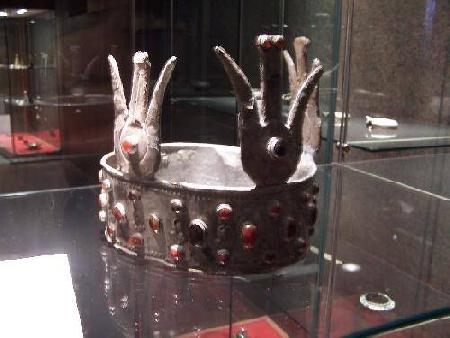
(Group X Period (320bc-550ac) Ballana Culture.
Some archaeologists identified the cultural phase following the Meroitic Period in Nubia as the X-Group; they differentiated the X-Group culture from that of the Meroitic and believe that the X-Group represented the invasion of a new people. Archaeologists now believe that the X-Group culture is actually a continuation of that of the Meroitic Period, with no large-scale invasion of new people, though the nomadic Blemmyes did take over northern Lower Nubia at this time. Some scholars have proposed renaming the X-Group Period, using the term "Ballana culture" for Lower Nubia, while labeling the different but contemporaneous culture in the Meroitic south the "Tanqasi culture". The basic characteristics of the X-Group Period have been revealed, as in earlier periods, largely through the excavation of cemeteries. Unlike the Meroites, X-Group people did not use a pyramid shape for their tombs superstructures, but rather reverted to an older tradition and covered their burials with low earthen mounds. The capital of this phase located at Ballana a small city between Egypt and Sudan, the royal cemeteries found show that Ballana was more Africanized than Meroe. Architecture is poor and houses are different from those of meriotic period. Royal tombs are built in form of tumulus up to 70 m diameter a lot of treasures were found, all tombs used to have jewelry, weapons made of bronze and silver vessels.
